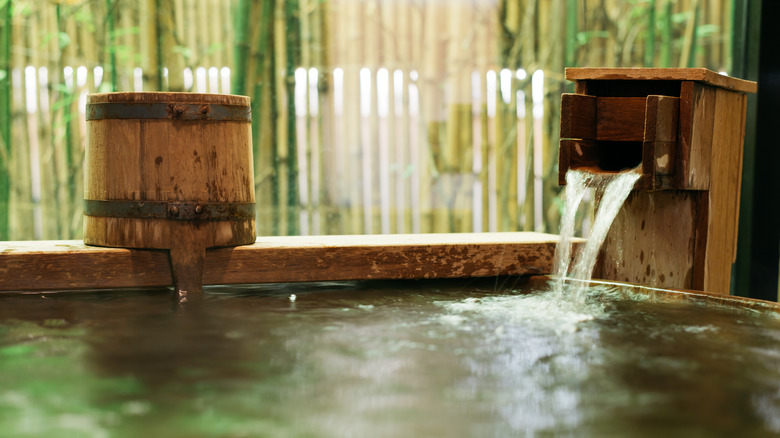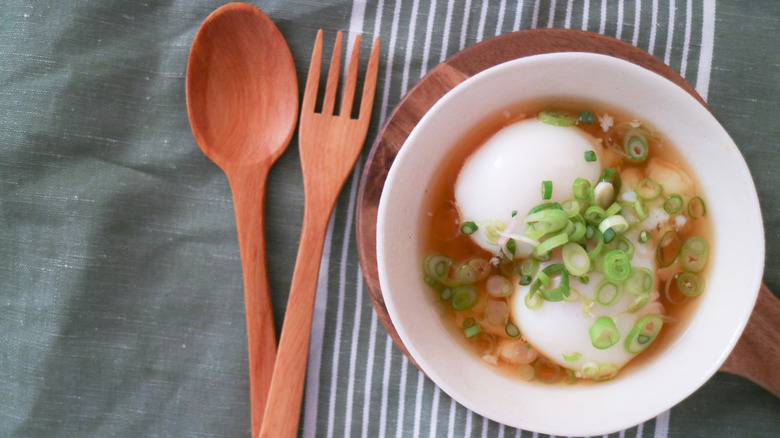Onsen Tamago: The Soft-Cooked Egg Dish Named After Japan's Hot Springs
The Japanese word "onsen" translates to "hot spring," while "tamago" translates to "egg." It's easy to guess how an egg factors into a soft-cooked dish, but the hot spring connection might be slightly less obvious. One clue lies in its nationality. Onsen tamago is, unsurprisingly, a Japanese food item, and Japan is full of hot springs due to its position along the volcanic "Ring of Fire," per Inside Japan.
While "onsen" does indeed mean "hot spring," it more specifically relates to the countless spas found across the country, both historically and currently. This communal bathing practice is a societal tradition stretching back to at least A.D. 720, if not further to even 1,000 B.C. (via Inside Japan). The onsen is believed to have benefits both medicinal and religious in nature. Nowadays, Japan's hot springs are also tourist sites. The spas' cultural reach truly extends far.
This applies to food, too. As reported by Nikkei Asia, hot springs were purported to revive dying plants and fatten fish like carp, all potential sources of nourishment. Plus, it's tradition to drink milk after an onsen bath, and Inside Japan notes hot spring resorts are known to have held banquet meals. Other countries are known to use their geothermal activity to direct culinary use, such as Iceland making volcanic bread. So, is that also the case with Japan and its eggs?
Three ways you can make your own hot spring egg at home
Yes. According to No Recipes, onsen tamago — the hot spring egg — is named after how it was traditionally cooked: slow-cooking an egg with the shell on in its own personal spa. Serious Notes explains the warm and stable temperatures of onsen waters made them ideal places for Japanese people to leave eggs, finding them cooked to perfection when they returned hours later. The result is an egg that's custardy and silky, with soft whites and runny yolks. This is adorned with a broth of dashi, soy, mirin, and sugar and then garnished with scallions or mitsuba (an herb with a celery-like taste).
Modern technology means one no longer needs to visit a hot spring to make an onsen tamago. No Recipes lists three different methods used to prep hot spring eggs. The first method is relatively simple; it only takes cooking an egg at a hot temperature (170 F) in a heavy pot for about twenty minutes. The second method is just as easy, but it uses a rice cooker — slightly more advanced equipment. Timing-wise, this way is roughly the same as the first, though the temperature should be slightly lower (160 F).
Last but not least, and most ideal of all is using a sous vide. This will take a bit longer, 45 minutes, but it also allows chefs to get closest to the ideal onsen tamago temperature (145 F). Whichever method is employed, onsen tamago will enjoy its "hot spring" spa bath and feel right at home.

